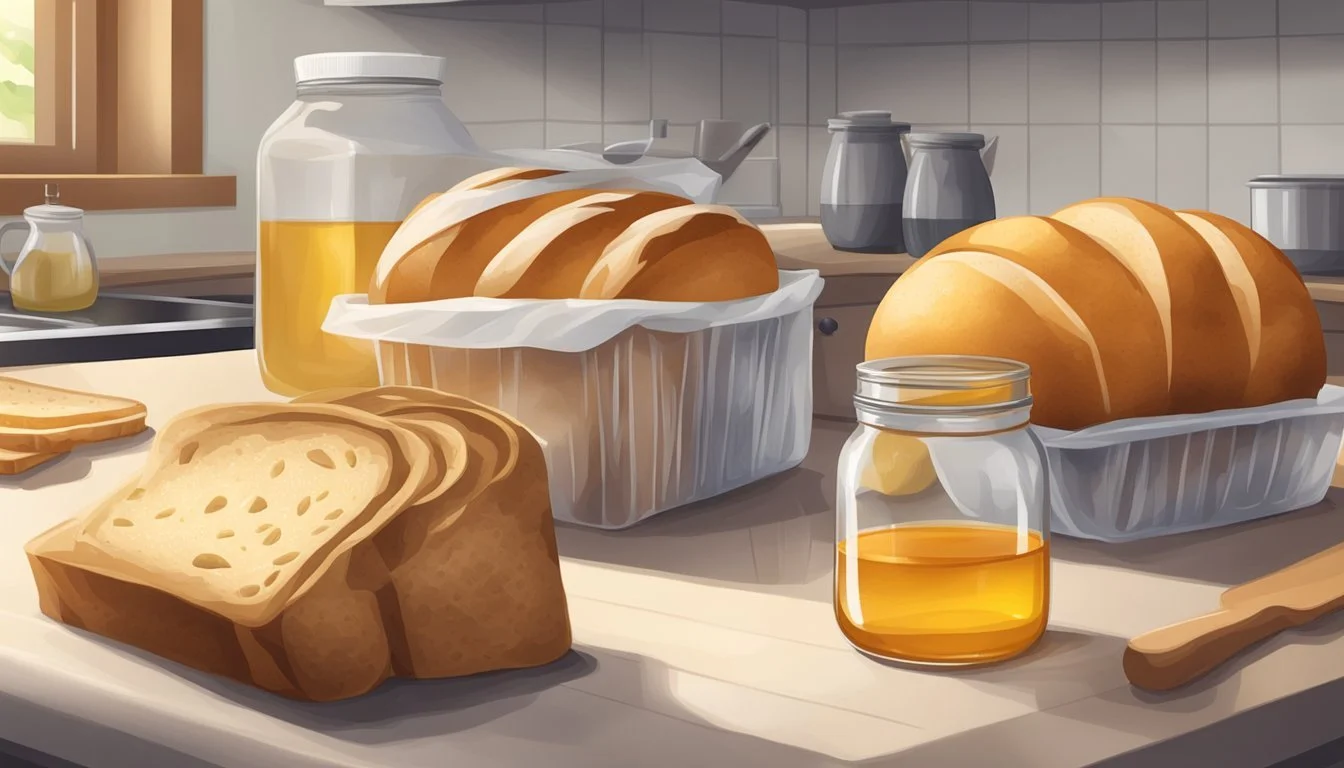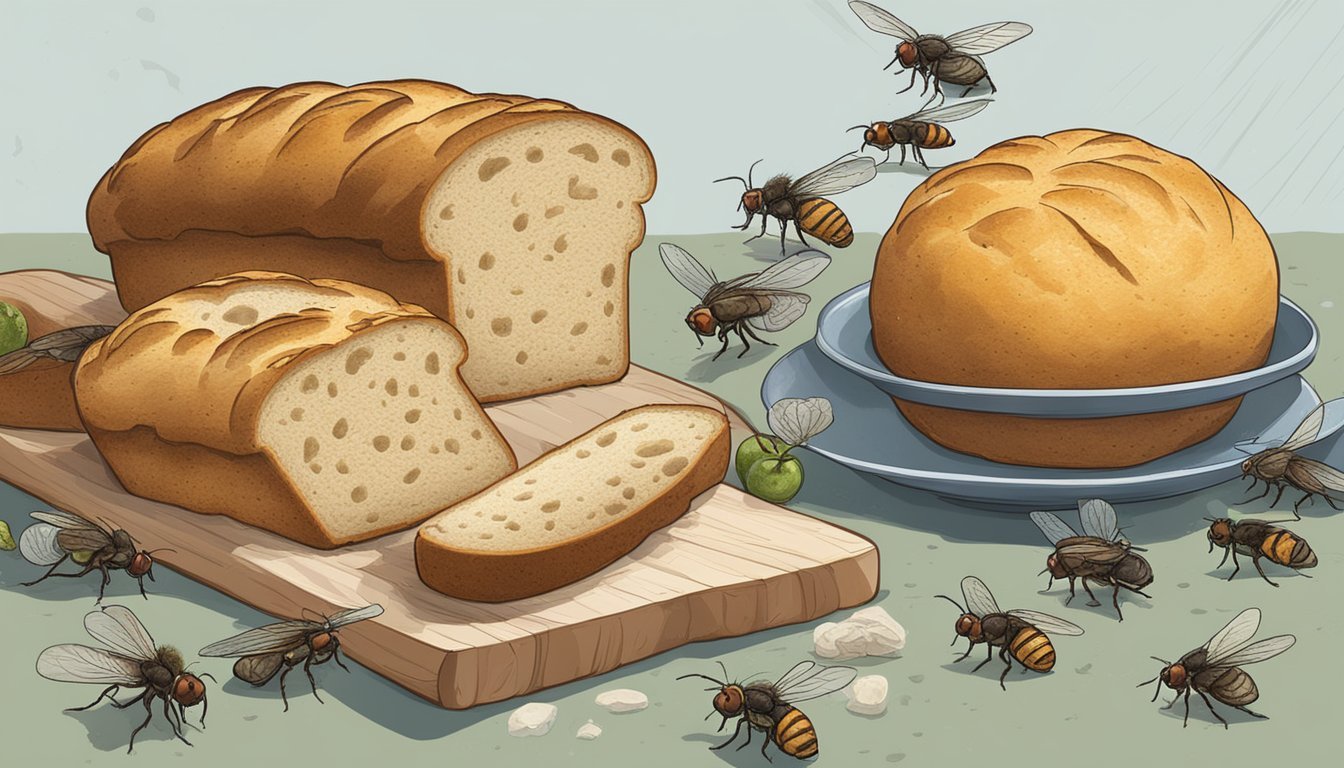Does Bread Go Bad?
Understanding Shelf Life and Spoilage Signs
When it comes to bread's (What wine goes well with bread?) shelf life, many consumers are unsure about how long their loaf will remain fresh and safe to eat. Bread does indeed go bad, and its longevity depends on various factors including storage conditions, bread type, and the presence of preservatives. Stored at room temperature, the average shelf life of bread ranges from 3 to 7 days, though this can vary based on the specific product and environmental factors.
Mold growth is a primary indicator of spoilage in bread. Typically, the onset of mold means the bread has become unsafe for consumption. Additionally, bread can be considered stale when it loses its moisture and becomes tough and dry. While stale bread might not necessarily pose a health risk, it is less palatable and may not provide the expected texture and flavor. Preservatives can extend a loaf's edibility, with some bread lasting up to several weeks when unopened and stored correctly.
Understanding Bread and Its Components
Bread is a staple food prepared from a dough of flour and water, usually by baking. It has been a prominent food in large parts of the world and is one of the oldest man-made foods, having been of significant importance since the dawn of agriculture.
Composition of Bread
The basic composition of bread includes flour, water, salt, and yeast. Flour provides the starches and proteins necessary for the structure of bread. Starch within flour is responsible for the white, soft crumb of the bread, while proteins, like gluten, give bread its elasticity and chewiness. Ingredients like yeast facilitate the fermentation process that causes bread to rise. Homemade bread may include additional components like eggs and milk to enrich the dough.
Starch: A key carbohydrate, providing energy and structure.
Gluten: A protein that offers elasticity to the dough.
Fiber: Found in whole-grain bread, important for digestive health.
Protein: In addition to gluten, other proteins contribute to the nutritional value.
Water: Activates the gluten and dissolves ingredients, aiding in chemical reactions during baking.
Different Types of Bread
The variety of bread is vast, with numerous options including white, whole-grain, and gluten-free bread. Each type varies in texture, flavor, and nutritional content.
White bread – Made from refined wheat flour and has a lighter texture.
Whole-grain bread – Contains the entire grain kernel, offering more fiber and nutrients than white bread.
Gluten-free bread – Suitable for those with gluten intolerance or celiac disease, made from alternative grains like rice or corn flour.
Role of Preservatives
Preservatives extend the shelf life of store-bought bread by inhibiting the growth of mold and bacteria. Without preservatives, bread can become stale or develop mold more quickly. Expiration dates on packaging indicate how long the bread is expected to remain fresh. However, preservatives are typically absent in homemade bread, shortening its shelf life.
Natural preservatives: Salt, sugar, and certain oils may act as preservatives to an extent.
Artificial preservatives: Chemicals like calcium propionate are used to prolong the freshness of bread.
Factors Affecting Bread Freshness
Maintaining the freshness of bread is crucial to extend its shelf life and preserve its quality. Several specific factors play vital roles in the longevity of bread's freshness, including environmental conditions, moisture content, and the distinction between becoming stale and outright spoilage.
Environmental Impact on Bread
Temperature and Light: Bread's freshness is highly sensitive to storage temperature and exposure to light. It is best kept at room temperature, away from direct sunlight, since heat and light can accelerate spoilage. Optimal Storage Conditions: A cool, dark pantry is ideal to prevent the acceleration of mold growth and keep bread fresh longer.
Moisture Content and Mold Growth
Moisture Management: Bread requires a balanced moisture content to stay fresh. Too much moisture can lead to mold, while too little causes dryness and staleness. Mold, a type of fungus, thrives in moist environments, making bread with high moisture content more susceptible to mold growth. Sealing: Properly sealing bread in an airtight container or bag helps regulate moisture levels and protect it from external sources of moisture and air.
Staleness vs. Spoilage
Staleness: This refers to the loss of freshness and soft texture, often due to the bread's exposure to air which leads to drying out. Stale bread is dry and tough but not necessarily unsafe to eat. Spoilage Signs: Spoilage, on the other hand, is indicated by the presence of mold, any off-odors, or a noticeable change in taste. Spoiled bread should be discarded to avoid foodborne illness. It is essential to distinguish between stale and spoiled bread to prevent waste and protect health.
Storing Bread to Extend Shelf Life
Proper storage of bread is crucial in maintaining its freshness and preventing mold growth. The following subsections outline the best practices for bread storage in various conditions.
Ideal Storage Conditions
To maximize freshness, bread should be stored at room temperature in a dry, cool place. A bread box is optimal because it maintains the right balance of humidity and air circulation. A pantry can also serve well if it's not subject to temperature fluctuations. For those without a bread box, a paper bag can be effective, though it may not keep the bread fresh as long as a bread box.
Refrigeration and Freezing Techniques
Bread can be refrigerated or frozen to extend its shelf life, though these methods have different impacts on quality. Refrigeration can lead to stale bread due to the dry environment. For long-term storage, freezing is preferable. When freezing bread, one should slice it beforehand and store it in a freezer bag. To defrost, leave the bread at room temperature or use a toaster to revive it.
Refrigeration: Not recommended for keeping bread fresh, although it can prevent mold.
Freezing: Best for long preservation. Store slices in a sealed freezer bag. Defrost as needed.
Packaging and Bread Freshness
The packaging is key to preserving the integrity of bread. Both homemade and store-bought bread benefit from airtight packaging, but the material can vary.
Plastic bags: Good for maintaining moisture but can encourage mold if bread isn't completely cool during storage.
Paper bags: Better for crusty bread that needs air circulation but can dry out soft bread.
Airtight containers: Excellent for soft bread, keeping it from drying out but must be dry to prevent mold growth.
Consistency in packaging can help bread maintain its best quality over time.
Distinguishing Between Safe and Unsafe Bread
When assessing whether bread is safe for consumption, one should scrutinize both visible signs and sensory changes to determine its quality.
Signs of Mold and Food Safety
Mold is a clear indicator that bread has become unsafe to consume. It appears as fuzzy spots of various colors, most commonly:
White
Greenish-blue
Black
If any signs of mold, including spores or discoloration, are detected on the surface or within the bread, it poses a food safety risk. Ingesting moldy bread can lead to food poisoning. Therefore, any bread with mold growth, no matter how small, should be considered moldy and discarded immediately.
Texture, Flavor, and Stale Bread
Beyond mold, the texture and flavor of bread are strong indicators of its freshness and edibility:
Texture: Bread typically becomes hard and dry when stale. Freshness is indicated by a soft and springy texture, while a tough or rubbery feel suggests staleness.
Flavor: A sour or off flavor is a sign that the bread may have gone bad and should not be consumed.
While stale bread may not pose the same health risks as moldy bread, it is generally considered unpleasant to eat and of lower quality. It's important to note that while toasting can revive slightly stale bread, it will not render moldy bread safe to eat.
Reviving Stale Bread
When bread becomes stale, it hasn't gone bad—it's just lost moisture, leading to a hard texture. However, several reliable techniques can effectively restore its softness and add new life to stale bread.
Techniques to Refresh Bread
One can easily revive stale bread by reintroducing moisture and heat. The method involves:
Preheat the oven to 300-325°F (150-162°C).
If the bread is only slightly stale, sprinkle the crust with water. For a loaf that feels particularly dry or hard, wrap it moistly in a damp towel or employ the aluminum foil method, where the bread is dampened and then wrapped entirely in foil.
Place the bread in the oven - directly on the rack for the water-sprinkling method, or on a baking sheet if using a towel or foil.
Heat the bread for about 6-7 minutes if it's small or moderately stale, and for up to 10-15 minutes if it's a larger loaf or extremely dense and dry.
For those who prefer convenience, a toaster can also be used to refresh individual slices of stale bread. Simply dampen the slice a bit before toasting it lightly.
Creative Uses for Stale Bread
Stale bread is incredibly versatile and need not be wasted. Here are a few innovative uses:
Breadcrumbs: Process dry bread in a food processor to produce homemade bread crumbs.
Croutons: Cut the bread into cubes, toss with oil and seasonings, and bake until crispy to create homemade croutons.
Bread Pudding: Cube and soak stale bread in a sweet or savory custard mix, then bake to create a comforting bread pudding.
Bread Salad: Incorporate chunks of stale bread into salads, like the classic Italian panzanella, for an added crunch and to absorb the dressing.
Impact on Health and Environment
When considering the implications of bread spoilage, it's imperative to address both health concerns related to the consumption of stale bread and the environmental consequences of bread waste. Implementing eco-friendly storage methods can significantly minimize this waste and its detrimental effects on the environment.
Consumption of Stale vs. Fresh Bread
Consuming stale bread can lead to a less enjoyable eating experience and reduced nutritional value; however, it is not inherently harmful unless it shows signs of mold. In contrast, fresh bread provides a better sensory experience and may retain more of its original nutrients. Food safety regulations suggest discarding bread with any signs of spoilage, especially when mold is visible, as it can be harmful to consume.
Eco-Friendly Storage and Reducing Food Waste
Minimizing food waste, particularly for perishable items like bread, can have a substantial impact on the environment:
Produce (like bread), meat, and eggs are often discarded prematurely, contributing to food waste.
To combat this, individuals can store bread in airtight containers or use a breadbox to maintain freshness.
Unused or stale bread can be repurposed into breadcrumbs, crackers, or other baked goods, consequently reducing waste.
Implementing such practices not only prolongs the shelf life of food but also aids in lessening the ecological footprint associated with the disposal of uneaten food.




